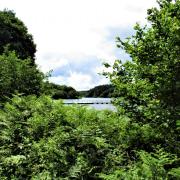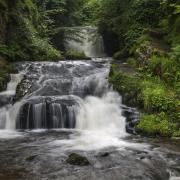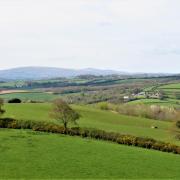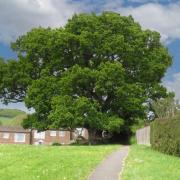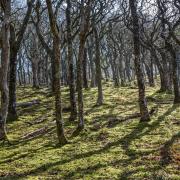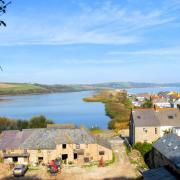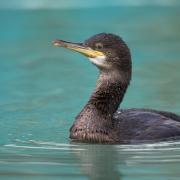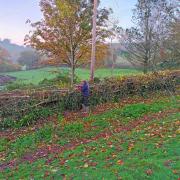As the year draws to a close, there’s still much to enjoy in the natural world. Winter is for purple, pink and orange sunsets that get painted across the sky. It’s the season for crispy fallen leaves, crunching underneath your feet. Although many of our most loved creatures are tucked tightly away in their nesting homes, staying warm and cosy while the winter passes, there are many species still braving the cold.
Read on to find out more about all our favourite winter wildlife spectacles, alongside a handy checklist on doing your bit to help wildlife get through the colder climate too. Many species have great adaptations for handling the freezing temperatures but it can be harder to find food and shelter each year. Doing your bit could make all the difference and ensure our favourite animals will be around for years to come.

Starling murmuration
This is one of the most spectacular winged displays if you are lucky enough to see it. Autumn roosts generally start to form in November and can be seen into January and February, so there’s plenty of time to keep an eye out. A murmuration is when a group of starlings come together above a communal roosting site. As groups merge together, the display becomes even more mesmerising.
If you are wondering why starlings create this acrobatic group dance, experts suggest that grouping together offers safety in numbers. Another reason could be that keeping warm at night is easier when birds stay together, plus there are suggestions that the murmuration is used as a communication signal, to tell of good feeding areas.
Best place to spot: Thameside Nature Discovery Park and Gunners Park and Shoebury Ranges Nature Reserve

Erupting fungi
Throughout autumn and winter, signs of new life can be seen emerging from the woodland floor. For some, seeing the array of colours and textures of fungi is a delightful wildlife encounter of this season. Although some fungi can be seen all year round, this is the best time of year because these mushrooms love the damp, dark earth.
One of the most popular and recognisable fungi species, fly agaric, is the typical toadstool of fairytales. With bright red colourations but characteristic white spots, it is easy to distinguish this fungus from others. You can also look for the brown and purple jelly-like crumples of a jelly ear stuck gently to the side of a branch or tree.
Best place to spot: Thrift Wood Nature Reserve and Cockaynes Wood Nature Reserve

Wildfowl gatherings and winter migrants
One of this season’s best displays is the cronking and honking of dark-bellied brent geese as they land across the stretches of wet grassland at Blue House Farm nature reserve. At this site, we support 25% of the UK’s population of the species, so it’s not only a great place for a coastal stroll along the sea wall, but one full of wildlife too.
We are always excited to see winter migrants and wildfowl gatherings, and at this time of year, these birds are enjoying the milder conditions of the UK. Each winter, thousands of ducks, swans and geese come to our reserves for respite. At Abberton, up to 40,000 wildfowl visit each year. The wildlife hides at both these nature reserves make for great places to shelter from the wind while enjoying the close encounter with some of these species.
Best place to spot: Abberton Reservoir Nature Discovery Park and Blue House Farm Nature Reserve

Wild woodlands
There is nothing better than visiting an enchanting woodland in the midst of winter. Whether the trees are snow-topped, or just coloured with reds, oranges and browns from their autumn spell, it is always a joy to wrap up warm, grab your wellies, and go exploring in the woods.
Even though some animals have fantastic camouflage and can creep quietly past, you can still look for signs. In winter, muddy woodland floors are great places to become wildlife detectives. Look for badger, deer, otter, fox, squirrel, mice and vole tracks!
If all else fails, you can always visit our captive herd of red deer. They might not be reindeer, but they are still a magical sight to see up close, just outside our Nature Discovery Centre.
Best place to spot: Belfairs Nature Discovery Centre, Bedfords Nature Discovery Centre, and Danbury Ridge Nature Reserves.

Festive favourites
It wouldn’t be the festive season without noticing our annual favourites. In winter, mistletoe starts to grow from branches of trees such as hawthorn and poplars. It is easier to spot in the colder season, as trees start to drop their leaves, revealing the mistletoe instead. Be careful, because mistletoe leaves, stems and berries are poisonous.
As for holly, the danger here is the spikes from their prickled leaves. From late autumn to mid-winter, hollies start to produce their famous red berries, the ultimate Christmas decoration. An old wives’ tale suggests that bushes with lots of berries are signs of a harsh winter, so be careful what you wish for!
Despite the famous Christmas song, turtle doves and partridges in pear trees are harder to come by at this time of year. Luckily, Essex is a stronghold for the soothing sounds of a purring turtle dove, and we have visits from this declining bird from late April and May. A walk around Wrabness nature reserve at springtime will hopefully be a successful one for turtle dove spotting. Meanwhile, enjoy the bright and sprightly songs of territorial robins, singing proudly with their red breasts upon tree branches and in gardens.
Best place to spot: Wrabness Nature Reserve
Join Essex Wildlife Trust this December for a whole host of wildlife walks, talks and events. We’ve got plenty to do to celebrate the festive season for everyone to enjoy. Find out more at essexwt.org.uk/whats-on

How to help wildlife where you live
When it’s cold and dark, and food is harder to find, how can we give nature a helping hand? Help protect our beloved hedgehogs, badgers, foxes and many more this month by:
• Feeding birds and keeping feeders topped-up
• Providing fresh water in a shallow bowl
• Leaving your garden wild, avoid disturbing leaf piles and brushwood
• Leaving ivy for hibernating insects
• Break the ice if your pond or water source freezes over
• Become a member of Essex Wildlife Trust and help us protect and conserve wildlife




